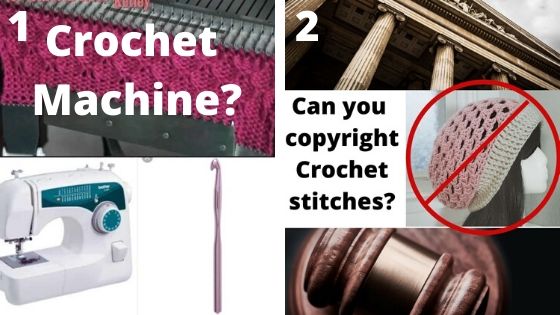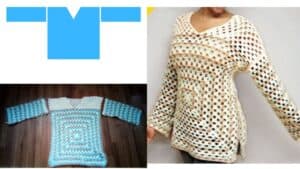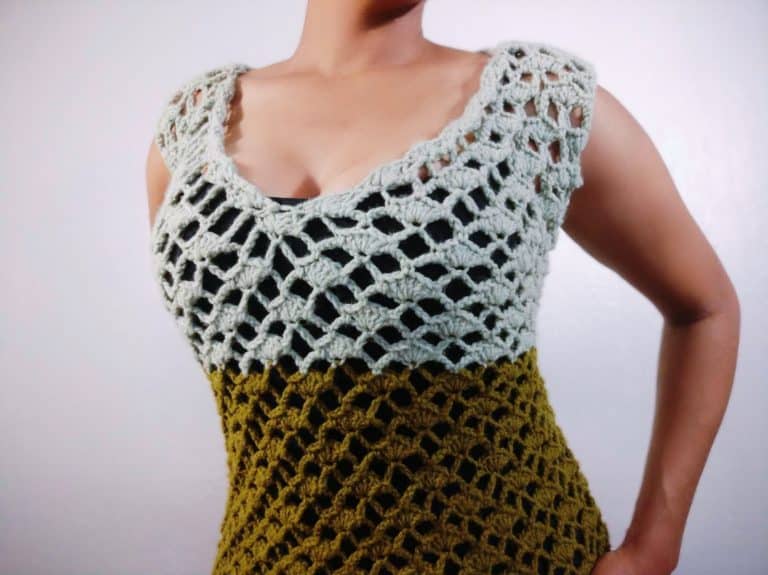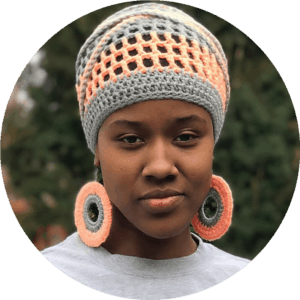Crochet Pattern Designing with Panels
So, you’ve decided to take the crochet leap into garments and crochet pattern design. Congratulations! But…now what? Most crocheters would advise, in no particular order, that you learn the magic formula, the importance of spacing increases/decreases evenly, & get ready to go around and around and around…literally.
It would be remiss to say that hasn’t worked because it has for a very long time…but, realistically there is a better way; a much more reliable way; a much easier way; a much neater way, & best of all because time is money…a much FASTER way – PANELS!
Put simply, panels are the most basic building blocks of all garments. Defined, we could say that panels are the pieces that are joined to make a wearable item. Now to point out just a couple of the amazing reasons why we should consider them over working in the round.
Benefits of crocheting with panels
The amount of time it takes to complete a crochet project is, for all crocheters, the most integral consideration when deciding whether to take on a new project or learn a new crochet skill. For evidence of this, look no further than the very lucrative “short-cut crochet tools” industry. Venturing into garments, quite frankly, takes an even greater amount of time so that ANY potential way to lessen this is always a welcome friend. Enter panels!
Panels are generally worked as squares, rectangles, or other basic geometric shapes that are then joined via a seaming method, to produce a wearable. To break it down a bit further, consider that a sweater is basically 4 rectangles (front+back+2 sleeves), seamed together at the proper points.
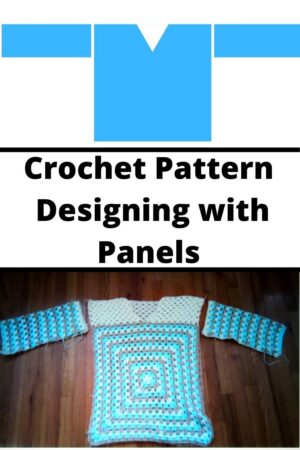
As it relates to speed, the very nature of working back & forth in rows to a desired length & width is much faster than working around in a tubular process. Additionally, one maintains complete control of the dreaded “seam line” that can travel where it pleases when we begin placing increases & decreases for shaping purposes.
Speaking of shaping, panels remove the evenly spaced increases & decreases that working in the round require, thereby producing a much neater finish. Each of these seemingly small tasks obviously adds up rather quickly when taken together, but panels address them seamlessly (;-D pun intended cause smiling is good for you!)
Panels & Crochet Pattern Writing
Traditionally, patterns have been written per the gauge of the writer. What’s more, garment patterns are, more often than not, written for either a specific size or a range of sizes. Historically, this has been no big deal; but pattern writing in crochet has re-emerged as a means of income for some, & the ability to charge more for patterns is directly commiserated to its ability to be used as widely as possible, as opposed to for simple personal use.

Panels allow authors to create patterns to measurements as opposed to specific (often vague) sizes based on the designer’s gauge. This translates to the gauge of the crocheter not mattering as much as it has traditionally in order to successfully follow the pattern, thereby saving the pattern purchaser/follower time in not having to adjust hook size to mimic the gauge of the author.
For example, if a pattern instructs to create 2 panels that measure 18×10, the crocheter would simply chain (or work foundation sts) to 10” & work rows until they reached 18.” In this instance, the importance of their gauge is of use to them if they want to know how many rows they will need to work in order to reach the ten inches. What it will NOT do is impact them in any way as it relates to completing the pattern. Basically, it opens up the pattern writers’ ability to ensure their patterns are able to be followed by a wider audience & that audience, should they choose, is able it sell to a wider audience.
Another example rendering the same positive outcome would be a pattern that instructs to create a panel the measures equal to a measurement from the body of the person the item is intended for. In this case, the same logic applies, as the crocheter will create per their gauge to the given measurement. This completely changes the game on crochet pattern designing & writing!

To Sum It UP
There are innumerable benefits for the use of panels versus working in the round to create crocheted garments & crochet pattern design. Thus far, the only negative consequence seems to be the short learning curve necessary for the transition to this absolute amazingness! To be sure, the use of panels to make garments is most definitely going to continue to grow as Urbanwear Crochet does. It’s the logical evolution in this awesome craft.
Belinda Smith author
Belinda is the founder of Posh Panache Crochet, crochet pattern designer, teacher, writer & crochet entrepreneur.
If you liked this article, then check out these below.
